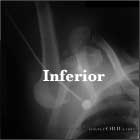 |
synonyms: inferior shoulder dislocation
Luxatio Erecta ICD-10
A- initial encounter
D- subsequent encounter
S- sequela
Luxatio Erecta ICD-9
- 831.03(inferior)
- 718.81 (instability of shoulder joint)
Luxatio Erecta Etiology / Epidemiology / Natural History
- Rare, may be as low as 0.5% of all shoulder dislocations
- Generally occurs from a hyperabduction force or axial loading on the abducted arm.
- Commonly reported bilaterally. (Numerous case reports)
Luxatio Erecta Anatomy
- Glenohumeral stability is dependent on static (labrum, GH capular ligmants) and dynamic (RTC, deltoid, biceps, scapular musculature) restraints.
- Inferior glenohumeral ligament (consist of anterior inferior GH ligamant, axillary pouch and posterior inferior GH ligament) is the most important for resisting anterior translation in the abducted arm.
- See also Shoulder anatomy.
Luxatio Erecta Clinical Evaluation
- Inferior dislocation: arm is generally locked in an overhead position; horizontally abducted.
- Evaluate for axillary nerve function. Humeral head may compress the axillary nerve.
- Complete UE neurovascular exam, include brachial, radial and ulnar pulses.
Luxatio Erecta Xray / Diagnositc Tests
- A/P, and Lateral in the plane of the scapula, and axillary view. Closely evaluate for concomitant surgical neck or other fracture.
- Arteriography or other vascular study is frequenty indicated due to high association of inferior dislocations with axillary vessel injury.
- MRI: consider it evaluated labral intergrity after reduction.
- CT: helpful if bony lesions of the glenoid or humeral head are suspected.
Luxatio Erecta Classification / Treatment
- Ensure mechanism is consistant with inferior dislocation. Axillary nerve palsy, deltoid/RTC atony after shoulder trauma/surgery may cause inferior GH subluxation which will resolve with simple observation. (Pritchett JW, JSES 1997;6:356).
- Traumatic inferior dislocation: closed reduction, document neurovascular status before and after reduction. Reduction generally performed with appropriate sedation and traction-countertraction.
- Consider arteriogram.
Luxatio Erecta Associated Injuries / Differential Diagnosis
- Axillary nerve palsy
- Greater tuberosity fracture
- Bankart lesion:
- Capsular tear:
- HAGL lesion.
- Proximal humerus fracture.
- Coracoid Fracture
- Rotator cuff tear:
- SLAP
- Anterior Glenohumeral Instability
- Posterior Glenohumeral Instability
- Axillary nerve palsy / Deltoid atony (may cause inferior GH subluxation)
Luxatio Erecta Complications
- HAGL
- Axillary nerve palsy
- Brachial plexus palsy
- Axillary artery injury
- Osteonecrosis: rare; generally associated with fracture-dislocations. Best treated with observation in adolescents (Pateder DB, JBJS 2004;86A:2290).
- Recurrent instability:
Luxatio Erecta Follow-up Care
Luxatio Erecta Review References
- Middeldorpf M, Scharm B. De nova humeri luxationis specie. Clin Eur. 1859;2:12-116.
- Davids J, Talbott R. Luxatio erecta humeri: a case report. Clin Orthop Relat Res. 1990;252:144-149.
- Mallon W, Basset F, Goldner R. Luxatio erecta: the inferior glenohumeral dislocation. J Orthop Trauma. 1990;4:19-24.
- Schai P, Hinterman B. Arthroscopic findings in luxatio erecta of the glenohumeral joint: a case report and review of literature. Clin J Sports Med. 1998;8:138-141.
- Laskin RS, Sedlin ED. Luxatio erecta in infancy. Clin Orthop Relat Res. 1971;80:126–129.
- Foad A, LaPrade RF. Bilateral luxatio erecta humeri and bilateral knee dislocations in the same patient. Am J Orthop. 2007;36:611–613.
- Kumar KS, O’Rourke S, Pillay JG. Hands up: a case of bilateral inferior shoulder dislocation. Emerg Med J. 2001;18:404–405.
- Garcia R, Ponsky T, Brody F, et al. Bilateral luxatio erecta complicated by venous thrombosis. J Trauma. 2006;60:1132–1134.
- Sewecke JJ, Varitimidis SE. Bilateral luxatio erecta: a case report and review of the literature. Am J Orthop. 2006;35:578–580.
- Shane JN, Christopher CD, Katherine FB, et al. The two-step maneuver for closed reduction of inferior glenohumeral dislocation (luxatio erecta to anterior dislocation to reduction). J Orthop Trauma. 2006;20:354–357.
- Gardham JR, Scott JE. Axillary artery occlusion with erect dislocation of the shoulder. Injury. 1980;11:155–158.
- Lev-El A, Adar R, Rubinstein Z. Axillary artery injury in erect dislocation of the shoulder. J Trauma. 1981;21:323–325.
|

